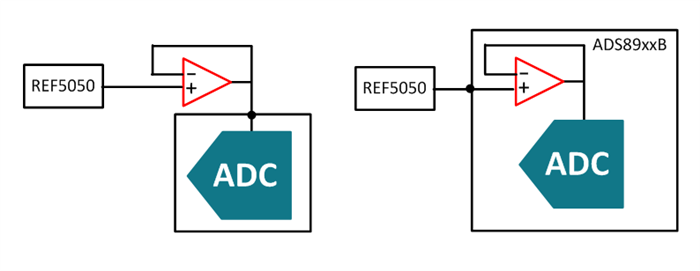The digital multimeter (DMM) is a centerpiece in any electronics lab, but as the precision of electronics continues to increase, so does the need for DMMs that can quickly and accurately measure current, voltage, resistance and other parameters. Thus, there is a constant need to improve the data-acquisition system within a DMM, enabling higher accuracy measurements. At the heart of the data-acquisition system is the analog-to-digital converter (ADC), which digitizes the input signal and sends the data to a host processor.
In this post, I will outline the most important features of an ADC as it pertains to DMMs, specifically benchtop systems in comparison to handheld version. Figure 1 shows the block diagram for the data-acquisition system of a typical DMM.
Figure 1: Block diagram of DMM input signal conditioning
While you can use many different ADC architectures in a DMM, one of the most common is the successive approximation register (SAR) ADC because of its speed, resolution and configurability. While delta-sigma ADCs can offer higher resolution and pipeline ADCs offer the advantage of faster sampling rates, the combination of high resolution AND fast response time of a SAR ADC enables a DMM to make quick and precise measurements. Since today’s SAR ADCs continue to become higher resolution, they have become a suitable alternative to delta-sigma ADCs for use in higher-precision systems.
Today, DMMs typically use an ADC with at least 16 bits of resolution and a sampling rate of at least 100kSPS (100,000 samples-per-second). As the need for higher-accuracy DMMs increases, so will the need for ADCs with higher speed and resolution. That is because while the resolution increases accuracy, it is much more susceptible to noise. You can mitigate the effects of noise on system performance by sampling at a higher rate and performing an average of multiple measurements (oversampling) and/or digitally filtering.
For systems requiring higher resolution and speed, TI offers the ADS8900B family of precision SAR ADCs with high resolution, fast sample rate and excellent AC/DC performance. Table 1 shows the specifications for this family.
|
|
ADS890xB |
ADS891xB |
ADS892xB |
|
Resolution |
20 bits |
18 bits |
16 bits |
|
Speed |
Up to 1MSPS |
Up to 1MSPS |
Up to 1MSPS |
|
Integral nonlinearity (typ) |
±1ppm |
±0.5LSB |
±0.5LSB |
|
Signal-to-noise ratio (typ) |
104.5dB |
102.5dB |
96.8dB |
|
Total harmonic distortion (typ) |
-125dB |
-125dB |
-125dB |
|
Package |
4 mm x 4 mm QFN |
4 mm x 4 mm QFN |
4 mm x 4 mm QFN |
Table 1: ADS8900B performance
In addition to being a high-performance ADC, the ADS8900B has an integrated operational amplifier buffer for the voltage reference that provides two distinct advantages over an external reference buffer. Figure 2 compares an external to internal reference buffer in a data-acquisition system.
The first advantage that you can get from an ADC with an integrated buffer is that it increases system performance. An ADC requires a high precision voltage reference, such as the REF5050, which is compared to the input signal to determine the signal voltage. Because the output current of a voltage reference is typically only several milliamps (mA), the reference buffer is used to supply the current required by the ADC during a conversion cycle while minimizing droop in the voltage reference. By integrating the reference buffer into the same chip as the ADC, the buffer is optimized to drive the ADC with lower distortion to the voltage reference, enabling higher performance data acquisition than those using an external buffer. The second advantage is that packaging the ADC and buffer together results in a smaller footprint than an discrete solution, resulting in a smaller system.
Although the ADS8900B family is helping enable the next generation of digital multimeters, there are numerous other applications for this SAR ADC. In my future posts, I’ll explain how it can reduce the size and power consumption of data acquisition systems that require multiple ADCs and how it can reduce or eliminate the headache of digital design for high-speed, high-resolution data acquisition systems. Be sure to sign in and subscribe to Precision Hub to get these posts delivered right to your inbox.
Additional resources
- Download the TI Designs Wireless IoT, Bluetooth® Low Energy, 4 ½ Digit, 100kHz True RMS Digital Multimeter Reference Design.
- Explore TI’s selection of precision ADCs deliver the most integration and lowest power consumption for demanding systems.



